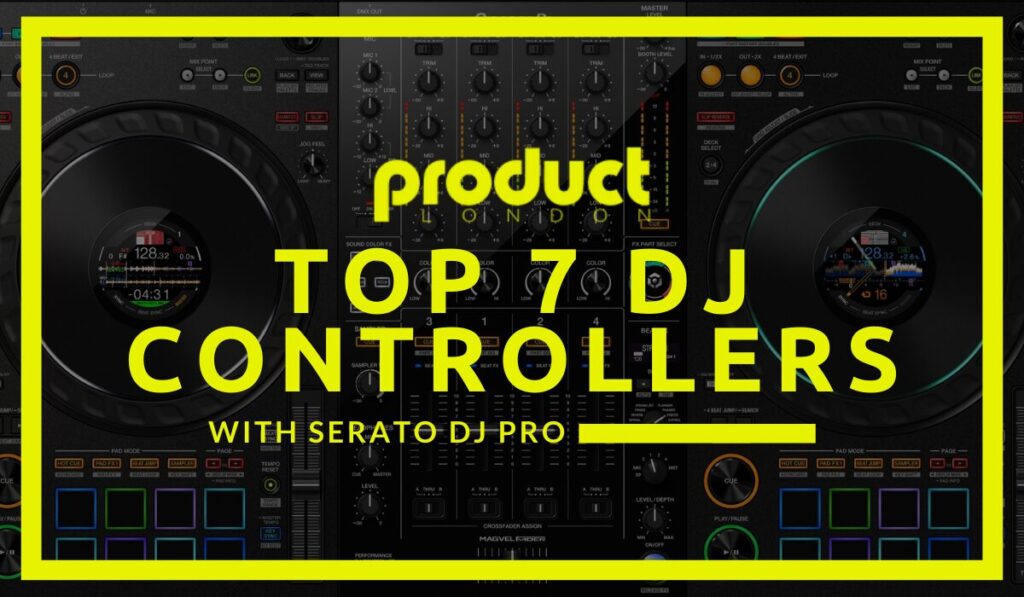VBR MP3, or Variable Bit Rate encoding, optimizes audio efficiency by adjusting the bitrate in response to the audio’s complexity. This technique guarantees that intricate audio segments receive higher bitrates to preserve fidelity, while simpler parts use lower bitrates to conserve space, resulting in smaller files without sacrificing quality. VBR’s dynamic allocation employs single-pass or multi-pass encoding methods, balancing speed and audio precision. This flexibility makes it ideal for music streaming and digital libraries, enhancing sound quality and storage efficiency. For an in-depth exploration of VBR’s encoding techniques and practical applications, opportunities abound to explore further.
Key Takeaways
- VBR MP3 dynamically adjusts the bitrate according to audio complexity, enhancing sound quality and reducing file size compared to CBR.
- It allocates higher bitrates to complex audio segments and lower bitrates to simpler parts, optimizing data usage.
- Single-pass encoding prioritizes speed, while multi-pass encoding focuses on achieving superior audio quality through detailed analysis.
- VBR is preferred by streaming services and audiophiles for its efficient compression and high fidelity in audio delivery.
- Bitrate range flexibility allows VBR to balance file size and audio quality, adapting to different audio complexities.
Understanding VBR MP3 Encoding
Variable bitrate (VBR) MP3 encoding is a sophisticated audio compression method that enhances both file efficiency and sound fidelity by dynamically adjusting the bitrate according to the complexity of the audio content. This adaptive approach allows for higher compression ratios during simpler audio passages and allocates more bits to intricate sections, ensuring peak sound quality.
The efficiency of VBR algorithms lies in their ability to conduct real-time audio signal analysis, which evaluates the audio’s complexity and adjusts the bitrate accordingly.
Unlike Constant Bit Rate (CBR) encoding, where the bitrate remains uniform, VBR achieves a superior quality-to-file size ratio, which is particularly beneficial for music with varying dynamics.
Modern VBR encoders employ advanced techniques to maximize algorithm efficiency, producing smaller file sizes without compromising audio integrity. These encoders typically offer single-pass and multi-pass encoding options; the latter prioritizes encoding quality by analyzing the audio multiple times but requires longer processing durations.
VBR encoding’s ability to balance file size and sound fidelity makes it a preferred choice in music streaming services and digital libraries.
Its application is favored by audiophiles and sound engineers who demand high quality and efficient storage solutions.
Compression and Bitrate Dynamics
Variable Bit Rate (VBR) encoding dynamically adjusts the bitrate in response to the complexity of audio content, achieving efficient storage utilization by allocating higher bitrates to intricate audio segments and lower bitrates to simpler ones.
This adaptive bitrate adjustment guarantees that each segment of the audio receives an ideal amount of data, enhancing the quality-to-size ratio of the final MP3 file.
Adaptive Bitrate Adjustment
Although often overlooked by casual listeners, the adaptive bitrate adjustment in VBR MP3 encoding is a sophisticated process that intelligently modulates the bitrate to match the complexity of the audio content.
This technique relies heavily on dynamic audio analysis, enabling momentary bitrate adjustment to optimize sound quality. During encoding, the algorithm assesses the audio signal’s complexity, dynamically altering the bitrate in real time. Simple audio passages, such as silence or sustained tones, are compressed using fewer bits, while complex segments, like those with intricate instrumentation or reverb, are allocated more bits to preserve audio fidelity.
The adaptive nature of VBR encoding guarantees a balance between quality and file size. Bitrate varies within a predefined range, allowing for efficient allocation of bits where they are needed most. This results in smaller file sizes compared to constant bit rate (CBR) encoding without compromising audio quality, especially in high bitrate settings.
Additionally, the encoding process can utilize either single-pass or multi-pass modes, with the latter providing enhanced quality through repeated analysis.
Consider the benefits of VBR:
- Enhanced Quality: Prioritizes sound fidelity in complex audio.
- Efficient Compression: Manages file sizes effectively.
- Flexible Encoding: Supports diverse audio content seamlessly.
Efficient Storage Utilization
Building upon the adaptive bitrate adjustment principles, efficient storage utilization in VBR MP3 encoding is achieved through strategic compression and bitrate dynamics. By dynamically altering the bitrate in response to audio complexity, VBR MP3 encoding maximizes storage efficiency.
Simpler audio passages, such as silence or less intricate sounds, undergo more aggressive compression, considerably reducing file sizes while maintaining sound quality. Conversely, complex audio sections are allocated more bits, guaranteeing fidelity without unnecessary storage consumption.
The flexibility of VBR encoding is underpinned by its ability to specify minimum and maximum bitrate limits. This dynamic range allows for a tailored encoding process, enhancing bit allocation according to the real-time audio demands of each segment.
Consequently, VBR files often boast smaller sizes than their Constant Bitrate (CBR) counterparts, offering a superior quality-to-size ratio.
Despite the potential for unpredictable average bitrates and file sizes, when correctly configured, VBR promises efficient storage efficiency. This method is particularly advantageous for extensive music libraries, where maintaining high-quality audio with minimized storage requirements is vital.
Sound Quality Benefits
In the domain of audio encoding, VBR MP3 stands out for its superior sound quality benefits, owing to its dynamic bitrate allocation. This advanced encoding technique markedly enhances dynamic range and audio fidelity, particularly in music with varying complexities.
By adjusting the bitrate based on the audio’s intricacies, VBR MP3 guarantees that complex passages receive higher bitrates, preserving the intricate details of reverberation and harmonics. This dynamic approach enables VBR to maintain exceptional audio fidelity, providing a listening experience that is both rich and nuanced.
The sound quality improvements offered by VBR MP3 are evident in several key areas:
- Enhanced Audio Detail: VBR allocates more bits to complex audio sections, guaranteeing crisp and clear sound reproduction, even in challenging listening environments.
- Efficient Compression: Through efficient compression of simpler audio passages, VBR retains clarity in less dynamic segments, optimizing file size without sacrificing quality.
- Optimized Bitrate Use: By dynamically adjusting bitrates, VBR files can achieve smaller sizes than equivalent CBR files at the same quality level, such as 320 kbps, offering superior performance.
These attributes collectively guarantee that VBR MP3 delivers a superior auditory experience, making it a preferred choice for both audiophiles and casual listeners alike.
VBR vs. Other Formats
When comparing VBR (Variable Bit Rate) encoding to other audio formats, its unique ability to dynamically adjust bitrates sets it apart. Unlike CBR (Constant Bit Rate), VBR optimizes audio compression by allocating bits based on the complexity of the audio signal. This results in a more efficient use of data, often leading to smaller file sizes without a compromise in sound quality. The flexibility of VBR is a significant advantage, particularly for genres with fluctuating complexity, offering a superior listening experience compared to the uniformity of CBR.
However, VBR is not without limitations. Compatibility issues may arise with older devices that do not support VBR, though most modern playback systems have resolved this challenge. VBR’s efficiency outshines formats like mp3PRO, which lack the same level of dynamic adjustment in bitrates, highlighting the innovative approach of VBR in handling audio data.
Below is a comparative table that outlines key differences:
| Format | VBR Advantages | VBR Limitations |
|---|---|---|
| VBR | Dynamic bitrate adjustment | Compatibility with older devices |
| CBR | Consistent playback | Larger file sizes, uniform quality |
| mp3PRO | Enhanced audio quality focus | Less efficient than VBR |
VBR remains a preferred choice for audiophiles and streaming services alike, prioritizing sound fidelity and data efficiency.
Practical Applications of VBR
VBR MP3 encoding finds its practical applications across a wide range of audio-centric industries due to its superior balance between sound quality and data efficiency.
Streaming services leverage VBR technology to deliver an optimized listening experience, adjusting the bitrate dynamically to suit varying audio complexities. This guarantees that users enjoy high-quality sound without excessive data consumption, making it a staple in the music streaming landscape.
Podcast production also benefits markedly from VBR encoding. By reducing storage requirements while maintaining audio integrity, VBR allows creators to manage large volumes of content efficiently.
Particularly in complex sound environments, such as interviews or live recordings, VBR guarantees clarity and fidelity.
Moreover, digital libraries capitalize on VBR’s ability to optimize storage. Audiophiles often prefer VBR for its adaptive bitrate capabilities, preserving sound quality in less complex segments and enhancing intricate audio passages. This is vital for maintaining a high-fidelity listening experience across diverse music collections.
In multimedia broadcasting, VBR is increasingly indispensable. As demand for high-quality audio content on portable devices grows, broadcasters utilize VBR to meet these requirements, guaranteeing consistent audio delivery even in bandwidth-constrained environments.
- Enhanced streaming quality without excess data use
- Efficient podcast storage with high audio integrity
- Optimized digital libraries for audiophile satisfaction
Encoding Techniques and Considerations
In VBR MP3 encoding, understanding the distinctions between single-pass and multi-pass techniques is pivotal; single-pass emphasizes encoding speed, while multi-pass aims for superior audio quality through detailed analysis.
The flexibility of bitrate range is another critical factor, as it allows encoders to set minimum and maximum thresholds that adapt to varying audio complexities, optimizing both file size and quality.
However, careful calibration of these parameters is essential to harness the full potential of VBR encoding, balancing efficiency with audio fidelity.
Single-Pass vs. Multi-Pass
Encoding techniques for MP3s, particularly Variable Bit Rate (VBR) encoding, can be broadly categorized into single-pass and multi-pass methods, each with distinct considerations and applications.
Single-pass encoding strategies are characterized by their real-time analysis and encoding of audio data, which prioritizes speed over quality. This approach is ideal for scenarios demanding immediate results, such as live broadcasts. However, the trade-off lies in the potential unpredictability of sound quality, as the encoder lacks the opportunity to conduct a thorough analysis of the audio content.
In contrast, multi-pass encoding focuses on optimizing audio quality through multiple passes, with the most prevalent being two-pass encoding. This method involves a preliminary pass to assess the audio’s complexity, followed by a second pass designed to allocate bits more effectively, thereby enhancing fidelity. Despite the extended processing time, multi-pass encoding typically yields a more consistent and superior sound quality than its single-pass counterpart.
Consider the following when choosing between these methods:
- Speed Needs: Single-pass is faster, suitable for time-sensitive tasks.
- Quality Goals: Multi-pass delivers superior and consistent quality.
- Resource Availability: Multi-pass requires more time and processing power.
Bitrate Range Flexibility
Some audio enthusiasts and professionals may find themselves drawn to the nuanced capabilities of bitrate range flexibility within Variable Bit Rate (VBR) encoding. This feature of VBR encoding allows for a dynamic adjustment of the bitrate, tailored to the complexity of the audio content, thereby enabling bitrate optimization. By specifying a minimum and maximum bitrate range, encoding strategies can be adapted to allocate higher bitrates to more complex audio segments while compressing simpler segments more intensively. This approach not only guarantees the preservation of audio fidelity but also achieves reduced file sizes, an essential consideration in podcasting and music streaming applications.
Moreover, certain encoders extend the capability to set an average bitrate within the designated range. This feature offers practitioners an additional layer of control over the balance between file size and audio quality, guaranteeing that their encoding strategies are both efficient and effective. Understanding and configuring this bitrate range is critical for optimizing audio output without superfluous file size inflation.
| Complexity Level | Bitrate Allocation | Resulting Effect |
|---|---|---|
| High | Max Bitrate | Enhanced Audio Quality |
| Medium | Average Bitrate | Balanced Compression |
| Low | Min Bitrate | Smaller File Size |
This table illustrates how bitrate range flexibility supports audio quality through strategic encoding.
Frequently Asked Questions
Is VBR MP3 Good Quality?
VBR MP3 provides superior audio quality by employing variable bit rate audio compression, optimizing data allocation based on audio complexity. This results in efficient file sizes without compromising sound fidelity, particularly in dynamic or intricate auditory compositions.
What Is VBR in MP3?
VBR in MP3, or Variable Bit Rate encoding, employs bitrate variability to optimize audio compression. It dynamically adjusts bitrates based on audio complexity, enhancing efficiency and preserving quality, making it advantageous for diverse applications in modern audio technology.
Is VBR MP3 the Same as MP3?
VBR MP3 differs from standard MP3 by offering dynamic bitrate allocation, enhancing audio quality and achieving smaller file sizes. VBR advantages include optimized sound fidelity, while VBR limitations involve potential incompatibility with some older playback devices or software.
Which Is Better, VBR or CBR MP3?
VBR advantages include superior audio fidelity and efficient file sizes, adapting dynamically to audio complexity. Conversely, CBR disadvantages stem from its fixed bitrate, often leading to larger files without enhanced quality, making VBR preferable for modern audio applications.
Conclusion
Variable Bitrate (VBR) MP3 encoding optimizes audio file size and quality by adjusting the bitrate dynamically according to the complexity of the audio signal. This method enhances sound quality over constant bitrate (CBR) formats, providing more efficient compression without significant quality loss. VBR is particularly advantageous for music and applications requiring high fidelity. Encoding techniques involve careful bitrate management and algorithmic adjustments, making VBR a preferred choice in audio engineering where both size and quality are critical considerations.




